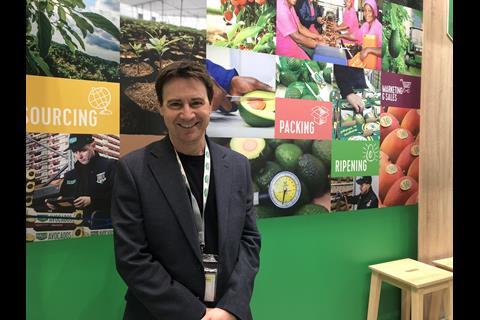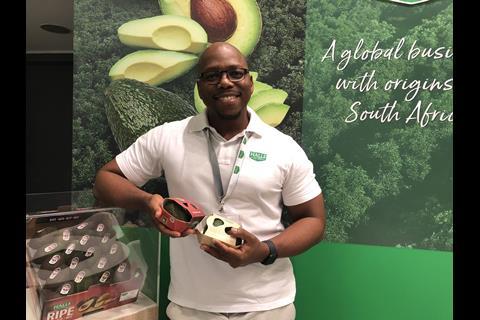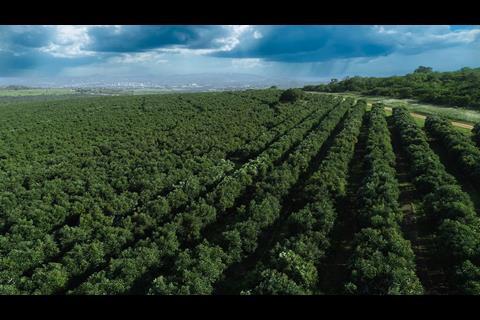Fred Searle talks to Paul Devlin and Ayanda Kanana of South African avocado grower and global marketer Halls to hear how they think the industry should respond to the likelihood of an oversupplied global market in 2023
Green gold: that is the media tag given to avocados thanks to the huge global demand for the fruit and the relatively high margins (in fresh produce terms) that can be made by producers.
Generally speaking, the past decade has been a story of runaway success for the avocado sector, and over that period, sales have rocketed in Europe and the US thanks to highly effective marketing and media exposure around the fruit’s health benefits and versatility. In the UK alone, retail sales of avocado have leaped from 22.5m kg in the year to 24 May 2015 to 59m kg in the year to 12 June 2022.
Attracted by this exponential sales growth, producers across the world – both old and new – have been getting in on the act by planting vast orchards of Hass avocado for export to lucrative global markets.
Until recently, the general feeling was that demand would not stop growing any time soon. And in some respects, this seemed a fair assumption given the relatively low per capita consumption of avocados. Even in more mature markets like France, Germany, the Netherlands and Scandinavia, the headroom for consumption and penetration growth remains significant.
Crunch time
The avocado industry now appears to have reached a crunch point, however, and this season is going to be a “big test” for the sector, according to Paul Devlin, managing director of Halls International – a major avocado supplier headquartered in South Africa with operations across Europe and China.
At certain points last year, avocado prices fell sharply due to oversupply, not least in Europe. And a more intense scenario looks likely in 2023, with global avocado production forecast to rise again. Global avocado exports could potentially grow by another 10-12 per cent this year, from 2.75m tonnes to a record 3m tonnes. This represents an additional 275-300,000t to be marketed globally since all the major producing origins are up this year. To put that into context, the 2023 export crop from South Africa will be 70,000t, so substantial extra volume needs to be absorbed.
Peru alone, which has expanded plantings more than any other country in recent years, is on course to export 624,000t of Hass avocado in 2023, according to ProHass. This is an increase of 12.5 per cent on last year’s total and almost double the 338,549t shipped in 2018. South Africa, meanwhile, expects to ship around 18 million cartons of avocado this year – almost two million more than in 2022.
“There needs to be a slight recalibration of the narrative to make sure everybody is aware that planting needs to be responsible,” says Devlin. “We’ve got to make sure everybody understands the realities of the industry and is balancing plantings with actual sales. It’s about having accurate data and information for the industry as a whole. We all require the avocado category to grow, but it must be at sustainable prices, unlike in many periods in the summer of 2022.
“There are a lot of new places around the globe looking to plant, which is great, but I think the ‘green gold’ tag has actually been one of the most damaging things for the fruit. Let’s focus on more data-based factual information rather than making emotional decisions.”
‘No time for mistakes’
For the past five years, global demand for avocados has exceeded supply, but this year Devlin believes the international avocado industry has reached a “real balancing point of whether supply will outstrip demand”. In a flooded market, the need to produce consistent, high-quality avocado is paramount, to ensure repeat purchases. And CEO of Halls Fresh Produce, Ayanda Kanana, stresses the need for suppliers to “level up” in 2023.
“We believe that even in a flooded market, if the fruit is good quality, we will be able to sell it. We’re not seeing it as a doom and gloom story; we’re seeing it as an opportunity to sharpen our delivery.
“We all have to go back to basics and make sure our farming practices and the quality we deliver are excellent. If we fault on quality, reliability, or consistency, we will be taken out because there is so much fruit coming. Nobody has time for mistakes.”
Focus on flavour
As well as offering a more consistent product, there is a growing need to evolve the way avocados are marketed, Devlin adds. “There’s still a lot of work to be done to promote avocados,” he says. “And something we all need to talk about more and take responsibility for – across the industry – is the taste experience for the consumer.”
Most consumers are now aware of avocados’ health benefits, but there is far less marketing focus on the fruit’s flavour profile, Devlin points out. Issues persist around variable product quality, internal defects, and unripe avocados being sent to market.
“Some producers have tried to second-guess the market and send their fruit when it’s not ready,” he says – and this has put off some consumers from making a repeat purchase. “We can’t just rest on our laurels and say: ‘The market is growing; volumes are growing’. The sector will not continue to grow longer term unless the consumer has that great experience.”
Despite this caveat, Devlin remains bullish that over the next seven years, avocado demand will continue to grow in Europe, the US and other emerging markets in Asia. The world’s most populous country, China, has so far failed to live up to expectations in avocados. In fact, last year it was only the 10th largest import market with per capita consumption reported to be only a fraction of the 4.1kg eaten by the average American. That said, Devlin predicts that China will become the third-biggest market globally by 2030.
Harnessing versatility
When it comes to the UK market, one of the biggest challenges will be negotiating a price point that fairly rewards growers at a time when supply is high and supermarkets are keen to keep down prices as much as possible amid record inflation.
With this in mind, the versatility of avocados could work in the industry’s favour. The fruit’s use in cooking oil, yoghurts, smoothies, cosmetics and a range of other products will allow the sector to absorb some of the extra volume and hopefully go some way to balancing supply and demand.
“With so many avocado products now available, the retail sector could improve cross-selling,” says Devlin, “and that may be an area the sector looks at in more depth to drive sales performance.”
Every little will help as the global avocado trade enters what might prove to be its most challenging year to date.






